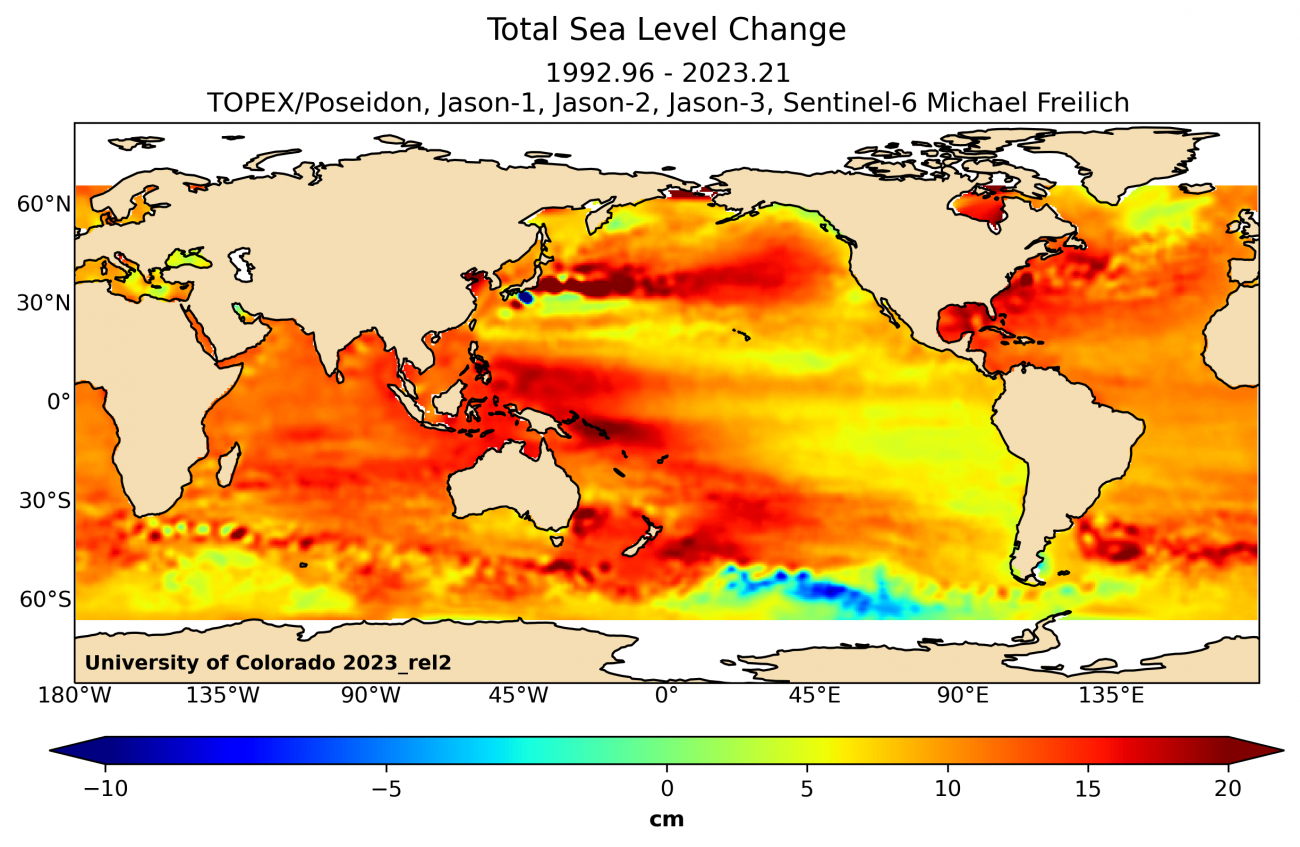Today is January 1, 2024, and the term of the wager is twenty percent complete.
In four years, sea level as reported by NASA has risen 5.3 millimeters. An additional 7 millimeters of rise were omitted due to a change in reporting, for a total rise of 12.3 millimeters.
This claim, an inspiration for the wager, remains true, and it is also true that sea levels may rise slower than previously predicted.
am_Unition was down for a 91 millimeter rise, by 2040 about 20 millimeters more than would be expected by a simple linear projection forward from the 1993 to 2000 trend. I think he will be about right (reaching about 186 mm over 1993 levels in 2040).
Zombie ice is exciting and this story was widely covered. But the researchers do not use such sensational language in their study.
- Systematically investigating the long-term consequences of CO₂ emissions on mass loss of the GIS is challenging because of the relevant timescales in the order of thousands of years. The elevation of the ice sheet on these timescales can substantially evolve, affecting atmospheric dynamics and precipitation patterns. Accurately capturing these connections requires coupling of the ice sheet model with a climate model. However, complex Earth system models (ESMs) are too expensive to run over thousands of years, which motivates the use of ESMs of intermediate complexity (EMICs, Claussen et al., 2002). On the downside, the relatively coarse resolution of the ice sheet required to simulate long timescales likely underestimates the response time of the GIS to temperature forcing especially during the first centuries to millennia due to the not explicitly resolved interaction between outlet glaciers and the ocean (Aschwanden et al., 2016, 2019; Choi et al., 2021).
Even when the timescale is measured in thousands of years, the simplified model used likely exaggerates how soon the zombie ice apocalypse may arrive.
A small discontinuity is visible in the chart of the wager. On Pi Day 2023, the value on the NASA page suddenly changed from 104 (± 4.0) mm to 97 (± 4.0) mm. archive 1 archive 2
I contacted the authors of an article that appeared the next day to ask about the change. One of the authors shared an explanation from the project scientist for Sentinel-6 Michael Freilich:
- We recently changed the way we report sea level rise on the NASA websites. In the past, we included a correction to the rate of sea level rise related to an effect called Glacial Isostatic Adjustment (GIA). GIA refers to changes in the Earth's crust that are still happening as a result of the end of the last ice age about 20,000 years ago. In previous releases, the "GIA correction" was applied to account for the fact that the sea floor is, on average, sinking very slightly. This sinking of the sea floor takes up some of the sea level rise that we would otherwise experience.
When we are trying to account for the causes of sea level rise, it was common among scientists to include an estimate of this effect. For this and future release, we have decided to stop including this effect, and instead report the rise in the average level of the oceans (as opposed to the change in ocean volume, which is what we were reporting before). The size of the effect is about 0.3 mm per year, so over 30 years, this is just a bit less that 1 cm. This is the reason for the ~1 cm difference in the new versus old numbers.
Both “GIA applied” and “GIA not applied” values are provided in the NASA data available to download. As we made the wager based on the “GIA applied” values, I suggest using the same measurement to determine the outcome of the wager. This works not only in mk’s favor but also for global human welfare, for coastal residents presumably don’t care much about the distance between the top and bottom of the ocean, compared to how high the water is relative to their homes (and any related consequences of rising seas).
Sea level is a complicated phenomenon, and a lot of complexity is obscured by a single number. I don’t doubt the upward trend, but I was surprised to learn that in some areas relative sea level fell in recent decades, because coastal land rose more rapidly than sea level. In a few small areas, even absolute sea level declined.
The sub-millimeter precision of the height of a rolling sea is also unrealistic. Wikipedia says (no source) that individual satellite measurements must be corrected for errors caused by atmospheric water vapor, electrons in the ionosphere, and the dry air mass of the atmosphere, giving a height accurate to “a few centimeters.” Averaging many measurements over time should depict the trend accurately, and even if the amazing technology is imperfect, I doubt that it is a source of bias; the bias is provided at the reporting layer.

